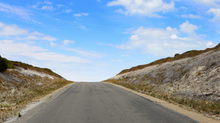What is the Difference Between "Paleo" and "Primal"?
- Bret McClellan
- Jun 7, 2015
- 3 min read
Very early in my Paleo career, when my wife and I began experiencing the benefits of the diet, I could not help but talk about it with our close friends and family. One of these conversations was with a lifelong friend of mine, who mentioned (somewhat snobbishly) that he was "Primal, not Paleo". When asked what the difference was, he responded by saying that "Primal allows dairy, and we love cheese."
I took this statement as fact at the time, given my relative noobie status on the Paleo scene. However, my question and his answer reverberated in my mind consistently throughout my compulsive thirst for knowledge on my newfound nutritional obsession. I found myself, while reading numerous books and listening to countless podcasts, constantly trying to find the evidence behind his statement.
Years later, after having studied the Paleo diet and Primal lifestyle incessantly, objectively following the main gurus in the movement, and after obtaining my Primal Blueprint Expert Certification, I can now say with veritable certainty that the question is answered. The following sentence appropriately summarizes my findings:
The Paleo Diet is a diet, and the Primal Blueprint is a lifestyle that incorporates the Paleo diet.
In other words, there is no difference - repeat: no difference - between Paleo and Primal, nutritionally. When following the Paleo diet, you can glean definitive information from various gurus such as Dr. Loren Cordain, Gary Taubes, Robb Wolf, Chris Kresser, Mark Sisson, Dave Asprey, and numerous others, as you are likely already aware. They all, without exception, advocate a strict exclusion of grains, legumes and dairy from your diet initially. The key word in the previous sentence is "initially," as there is some difference between them with respect to how long the initial digestive "reset" should occur. For example, Robb Wolf recommends in The Paleo Solution that you reset your digestive tract by excluding
the 3 potentially offending food groups for a minimum of 30 days. Mark Sisson, on the other hand, recommends implementation of the Primal Blueprint for a minimum of 21 days. Each have their own, very supportable reasons for their recommended "reset" timeframes. The bottom line, however, is that they all agree that the exclusionary Paleo principles should be implemented for a certain period of time, after which you may perform your own personal "n=1" experiment consisting of systematically reintroducing your favorite, potentially non-Paleo foods to see how your body reacts. From there, they all agree that if you do not experience negative effects from the reintroduction of those suspect foods,
then have at it! (Proper testing of those potential negative effects required, of course.) I would, however, posit that each of them definitively agree that grains, on the whole, are not acceptable health-wise, with the possible exception of proper preparation (sprouting) before ingestion.
Not long ago I had another conversation with my lifelong friend, who again mentioned that he was Primal, not Paleo. I then asked him, "How often do you sprint?" His subsequent quizzical expression told me everything I needed to know. I could have driven the point home by asking about his progress in the other 9 Primal tenets, but there was no need for humiliation. After all, he is a lifelong friend...
We are McClellan Natural Health, promoting wellness & nutrition. Our mission is to help you reclaim your health, naturally! We are here to help. If you have already been diagnosed with an AD, please call us for a consultation now at (770) 865-7232. You can also email us at camille@McClellanNaturalHealth.com, www.mcclellannaturalhealth.com.



































Comments